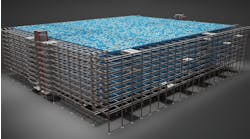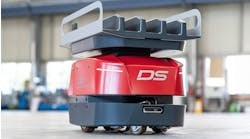A new competition to award more than $200 million in public and private investment to create an Integrated Photonics Manufacturing Institute was announced at Millennium Steel in Princeton, Ind. on Friday as part of Manufacturing Day.
According to a White House Fact Sheet, the Integrated Photonics Manufacturing Institute will focus on developing an end-to-end photonics 'ecosystem' in the US, including domestic foundry access, integrated design tools, automated packaging, assembly and test and workforce development.
"Today's announcement by President Obama and Commerce Secretary Pritzker is the highest possible endorsement and acknowledgment of the critical role that the US photonics industry will play in solving many of the present day challenges, creating US jobs, boosting the economy, and enhancing national security," said National Photonics Inititaive Steering Committee Chairman, Dr. Tom Baer
Each manufacturing innovation institute serves as a regional hub, bridging the gap between applied research and product development by bringing together companies, universities and other academic and training institutions, and Federal agencies to co-invest in key technology areas that encourage investment and production in the US.
The announcement follows a Request for Information (RFI) issued by the Department of Defense (DoD) in early June seeking responses from experts on key technologies that could become the basis for a new Institute for Manufacturing Innovation (IMI) within the National Network for Manufacturing Innovation (NNMI). Coordinated by the NPI in partnership with founding sponsor societies The Optical Society (OSA) and the International Society for Optics and Photonics (SPIE), dozens of experts within the national photonics community organized to answer DoD's request and provide numerous, thoughtful and compelling responses.
"Recognition by the administration signifies the NPI's success in bringing together industry and academia to promote the critical importance of photonics," said OSA CEO Elizabeth Rogan. "The NPI welcomes the opportunity to work with the optics and photonics community to further demonstrate how a photonics-based IMI would serve to strengthen US national and economic security."
Crucial breakthroughs in the fields of optics and photonics, the science and application of light, have led to technologies that help form the infrastructure of many U.S. industries and provide essential technologies for national defense and security. Photonics technologies enable nearly every commercial sector from defense to advanced manufacturing, information technology and communications to medicine. Historically, the United States has been the world pioneer in transitioning photonics research to the commercial markets; however, increased global competition has put at risk our leadership position, threatening our national security, economic growth and the pipeline of U.S. jobs.
The NPI's recently released white paper, Strategic Request: A National Photonics Prototyping and Advanced Manufacturing Facility to Ensure Economic Growth and National Security, advocates for investments in infrastructure to support a vertically integrated National Photonics Prototyping and Advanced Manufacturing Facility that would bring together end-users and material scientists, device engineers, system architects and advanced manufacturing experts to develop solutions to drive tomorrow's technology innovations.
"In a climate of increased global competition, the NPI remains committed to supporting public-private partnerships and investments in optics and photonics," said Eugene Arthurs, CEO of SPIE. "The NNMI has served as a fantastic paradigm for leveraging public and private sector resources as a means for boosting American manufacturing and technological capabilities. An Integrated Photonics Manufacturing Institute will greatly help to strengthen US leadership and competitiveness in photonics, ensuring a robust supply chain that will pay dividends across a variety of sectors of the US economy."
The Integrated Photonics Manufacturing Institute, led by DoD, is expected to comprise the largest Federal investment to date.











